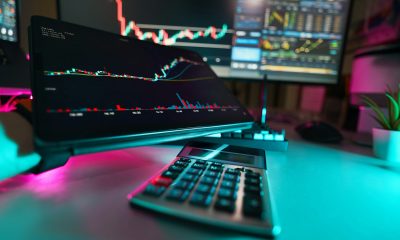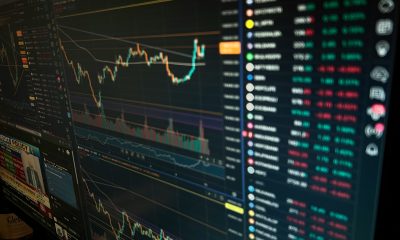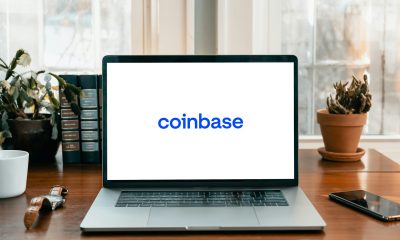Business
Tariffs, Layoffs, and a Looming Recession: Why Passive Investing May No Longer Work
Layoffs surged in March to near-record levels, while service and small business indexes declined. Despite 228,000 new jobs reported, unemployment rose to 4.2%. Tariffs triggered a 10% market drop, worsening inflation and inequality. With falling asset prices, rising tariffs, and no stimulus, recession looms. Active management is vital as government aid may arrive too late.

There was a near-record number of job layoffs announcements during the month of March, according to the labor research firm Challenger, Gray & Christmas. There was a total of 275,240 layoffs announcements last month. The level of layoffs was eclipsed once before in history when the nation was shutting down during the COVID pandemic outbreak in March of 2020.
The ISM services Index for March slowed to 50.8, down from 53.5 in February. The Employment Index dropped into contraction territory for the first time in six months; the reading of 46.2 percent is a 7.7-percentage point decrease compared to the 53.9 recorded in February. Meanwhile, the NFIB small business optimism index for March fell by the most month-over-month since June 2022.
Record number of layoffs in March
In sharp contrast with the huge number of layoffs, the non-farm payroll report for March showed an increase of 228,000 net new jobs created. But this was up from the revised number of 117,000 in February, which was much lower than the 151k number found in the original February report. The estimate for March was for just 140,000 jobs created. However, the unemployment rate (also beacuse of the layoffs) did tick up to 4.2% from 4.1%. This somewhat rosy data from the Labor Department contradicts most of the other jobs data from private sources.
However, this does put a Gordian knot in Fed Chair Powell’s hands. The hard economic data is still strong, and the inflation data is too high for pre-emptive rate cuts to occur. Even though tariffs virtually guarantee that a recession will happen sooner rather than later, they also push prices significantly higher. Inflation is projected to rise even faster than the current 3% pace. It is already at a level that has decimated the middle class. In fact, the middle class is on life support, and the divide between the rich and the poor has never been greater. For the 1st time in history, the top 1% of earners have more wealth than the entire middle class.
But now, falling asset prices are destroying even the balance sheet of those who inhabit the top quintile. The S&P 500 lost 10% of its value last Thursday and Friday alone, following President Trump’s liberation-day tariff announcement made on Wednesday evening.
The reason for the plunge is clear: Tariffs were—at least at first promulgated–much larger than expected. What was supposed to be just reciprocal duties placed on some nations became across-the-board taxes that were much higher. For example, the tariff on China has now been raised to 145%, although Trump caved in due to pressure from a cratering stock and bond market and paused most duties for 90 days.
But are stocks cheap now after this retreat? The S&P 500 is trading at 20x next year’s seven percent projected earnings growth. That is a rich multiple on an earnings growth rate that will most likely never happen. What is much more likely to occur is a lower multiple on earnings that are shrinking.
President Trump has stated that he wants to rebuild America’s manufacturing base, balance our trade deficit, and use tariff revenue to eliminate our fiscal deficit and pay for tax cuts—all a noble effort. If that is indeed the case, there really cannot be any trade deals of significance. Zeroing out tariffs will not accomplish any of the President’s goals. For example, Vietnam factory workers make about $3k per year on average. Chinese workers make $8k. Whereas US factory workers make $35k.
Therefore, even if all the existing tariffs are eliminated, it will do little to balance our trade deficit. Nor will it reduce our fiscal deficit one iota. It also cannot lead to a manufacturing renaissance. And, there will be no money raised to offset tax cuts. However, if the view of this administration is just to lower duties on the margin, they will in no way be large enough to offset the wage differentials, government support measures, and regulatory advantages found outside of the US–in other words, those non-tariff barriers used to gain an advantage over America.
Tariffs are taxes. And we still have a 10% rate for every nation and those onerous 145% rates for China
When you combine that tax hike with a falling labor force, the end of government stimulus, reduced liquidity, and a reverse wealth effect, you get an expedited and intensifying economic contraction. The US economy was on a slow glide path down towards a recession and a liquidity crisis before this trade war began. Regardless of Trump’s tariff twists, our Inflation/Deflation and Economic Cycle model is still indicating that a recession is coming. The real danger is the recession will be a deep one.
Most advisors say to just hang in there because the market always comes back. You will never hear that buy and hold B.S. at Pento Portfolio Strategies. This time around, neither the Fed or Treasury have the cover to act until the carnage is absolute. In other words, the government “Put” will arrive even later than usual, which, according to recent history, has arrived too late to halt the damage until half of your money has evaporated. Active and smart management has never been more critical.
__
(Featured image by D koi via Unsplash)
DISCLAIMER: This article was written by a third party contributor and does not reflect the opinion of Born2Invest, its management, staff or its associates. Please review our disclaimer for more information.
This article may include forward-looking statements. These forward-looking statements generally are identified by the words “believe,” “project,” “estimate,” “become,” “plan,” “will,” and similar expressions, including with regards to potential earnings in the Empire Flippers affiliate program. These forward-looking statements involve known and unknown risks as well as uncertainties, including those discussed in the following cautionary statements and elsewhere in this article and on this site. Although the Company may believe that its expectations are based on reasonable assumptions, the actual results that the Company may achieve may differ materially from any forward-looking statements, which reflect the opinions of the management of the Company only as of the date hereof. Additionally, please make sure to read these important disclosures.

-

 Crowdfunding1 week ago
Crowdfunding1 week agoCrowdfunding Grants Open for Business Projects Until January 2026
-

 Biotech1 day ago
Biotech1 day agoHaptena Therapeutics Launches with €3 Million Funding to Target KRAS-Mutated Tumors
-

 Crypto1 week ago
Crypto1 week agoBitcoin in 2025: Mainstream Momentum, Price Weakness, and a Pivotal Year Ahead
-

 Africa1 day ago
Africa1 day agoCasablanca Stock Exchange 2025: A Pivotal Year Toward Financial Maturity

























